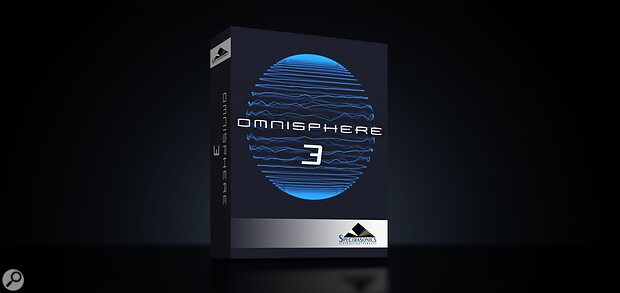Following their recent announcement, the long-awaited upgrade to Spectrasonics’ flagship software synthesizer is now available. Omnisphere 3 introduces thousands of new sounds along with a whole host of new synthesis features, additional effects, an Adaptive Global Controls system, MPE support, expanded hardware integration and more.
New Sounds, Controls & Synthesis Features
Omnisphere 3 comes loaded with a new factory collection comprising 18 libraries of sounds created by Spectrasonics’ award-winning Sound Design team. Searching for and auditioning patches has been improved too, thanks to a redesigned browsing experience and new organisation system, and thanks to some optimisation behind the scenes, the new expanded library requires no additional disk space compared to Omnisphere 2.
Thanks to a new Global Controls system, it’s now possible to adjust the key parameters of any patch quickly and intuitively. The system presents users with a set of controls: Tone, Ambience, Filter, Envelope, Vibrato and Unison, all of which automatically assign themselves to each new loaded patch. There’s also a Patch Mutations option that’s capable of generating new variations of a loaded patch, with every resulting sound automatically saved for recall.
The software has also been treated to an array of new synthesis capabilities, including:
- Powerful new Quadzone modulation for dramatic timbral movement.
- Upgraded Filter Section with 36 new filter types in seven sonic ‘colours’: Classic, Jupiter, Beefy, OB, French, Subtle and Sauce
- New circuit-modelled Filter Saturation.
- New Polyphonic Dual Frequency Shifter.
- New Oscillator Drift function provides coveted analogue instability.
- Oscillators now feature over 600 morphing wavetables.
- New Unison Phase Scatter, Mix and Analog features open lush possibilities with Sample Mode.
- New Glide modes: OBXA/Minimoog/Odyssey curves, Auto-Bend Up/Down, Glissando.
- Granular, Unison and Harmonia can now be blended simultaneously.
Expression & Effects
Those with compatible controllers will welcome the introduction of MPE Mode, which introduces full support for MIDI Polyphonic Expression, and there are some additional features that improve expressive capabilities for standard controllers, too. An Intelligent Polyphonic Modulation function automatically senses and switches LFOs and Envelopes into poly mode when Poly Aftertouch (and MPE) MIDI devices are used, and a new Adaptive MIDI Scaling mode allows Hardware Control and MIDI Learns to operate seamlessly during live performances. Additionally, new smoothing algorithms allow for more analogue-like results from MIDI Controllers, as well as offering separate smoothing options for Rise and Fall trajectories.
Effects have been treated to an extensive upgrade, with a total of 35 new FX Units spanning reverbs, delays, modulation, EQ, dynamics processors, distortions and more. And what’s more, all of Omnisphere’s built-in effects can be put to work outside of the synth thanks to a new Omnisphere FX VST/AU/AAX plug-in.
Hardware Integration
With the launch of the latest version, Omnisphere’s Hardware Integration feature has been greatly expanded. Over 300 new hardware profiles have been introduced, allowing just about any MIDI controller to take charge of the soft synth’s parameters. The new additions include controllers and hardware synthesizers from the likes of Roland, Korg, Yamaha, Nord, Novation, Arturia, M-Audio, Studiologic, ASM, Alesis, Akai, Behringer, Casio, Native Instruments, Nektar, CME, Kurzweil, Kawai, IK Multimedia and more, while new profiles have been added for a range of the existing offerings.
Compatibility
Omnisphere 3 is supported on PCs running Windows 10 or higher, and Macs running macOS 13 and above. VST2, VST3, AU and AAX plug-in versions are available.
Pricing & Availability
Omnisphere 3 is available now, priced at $499. Existing users can upgrade for $199.

